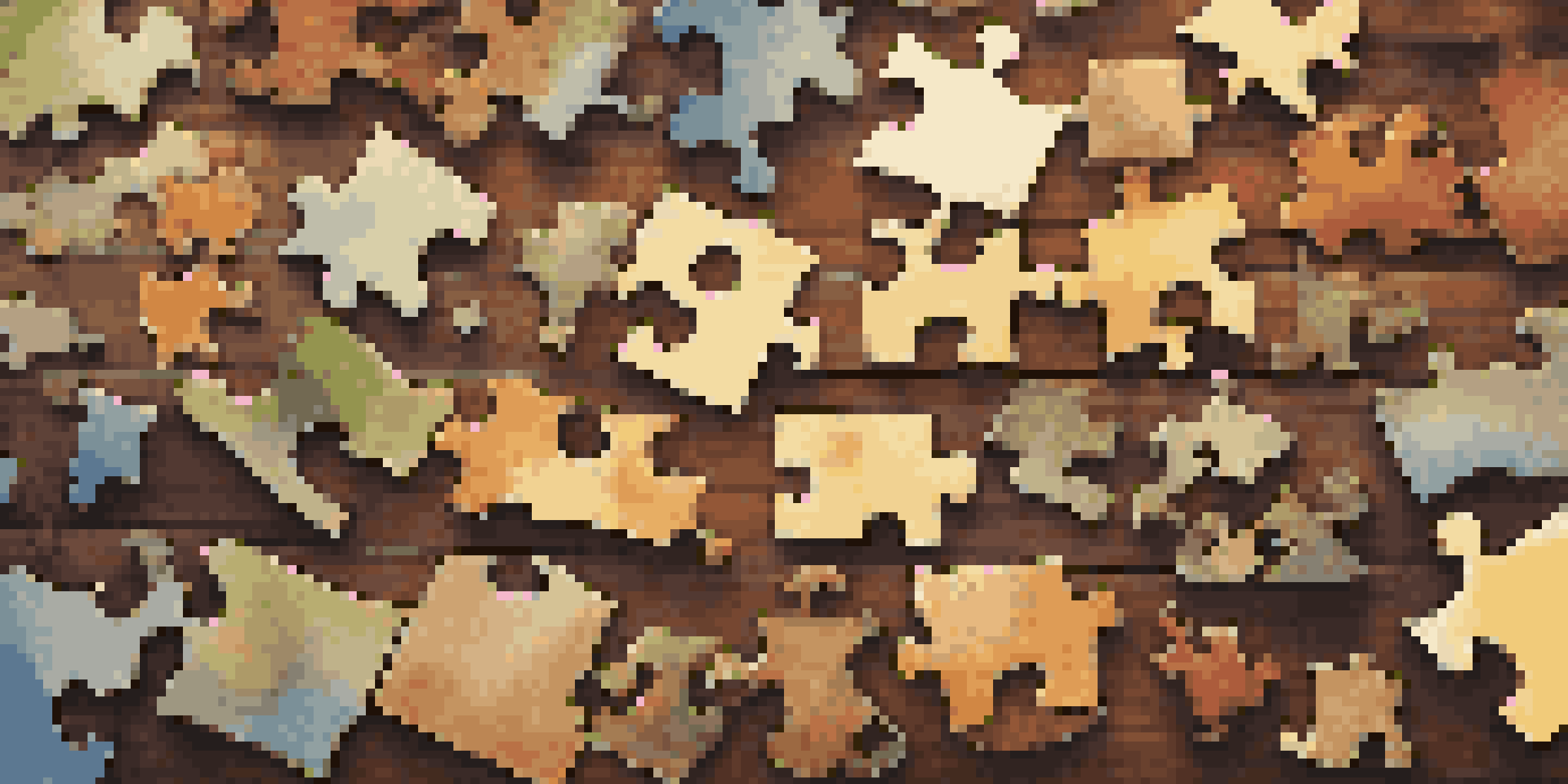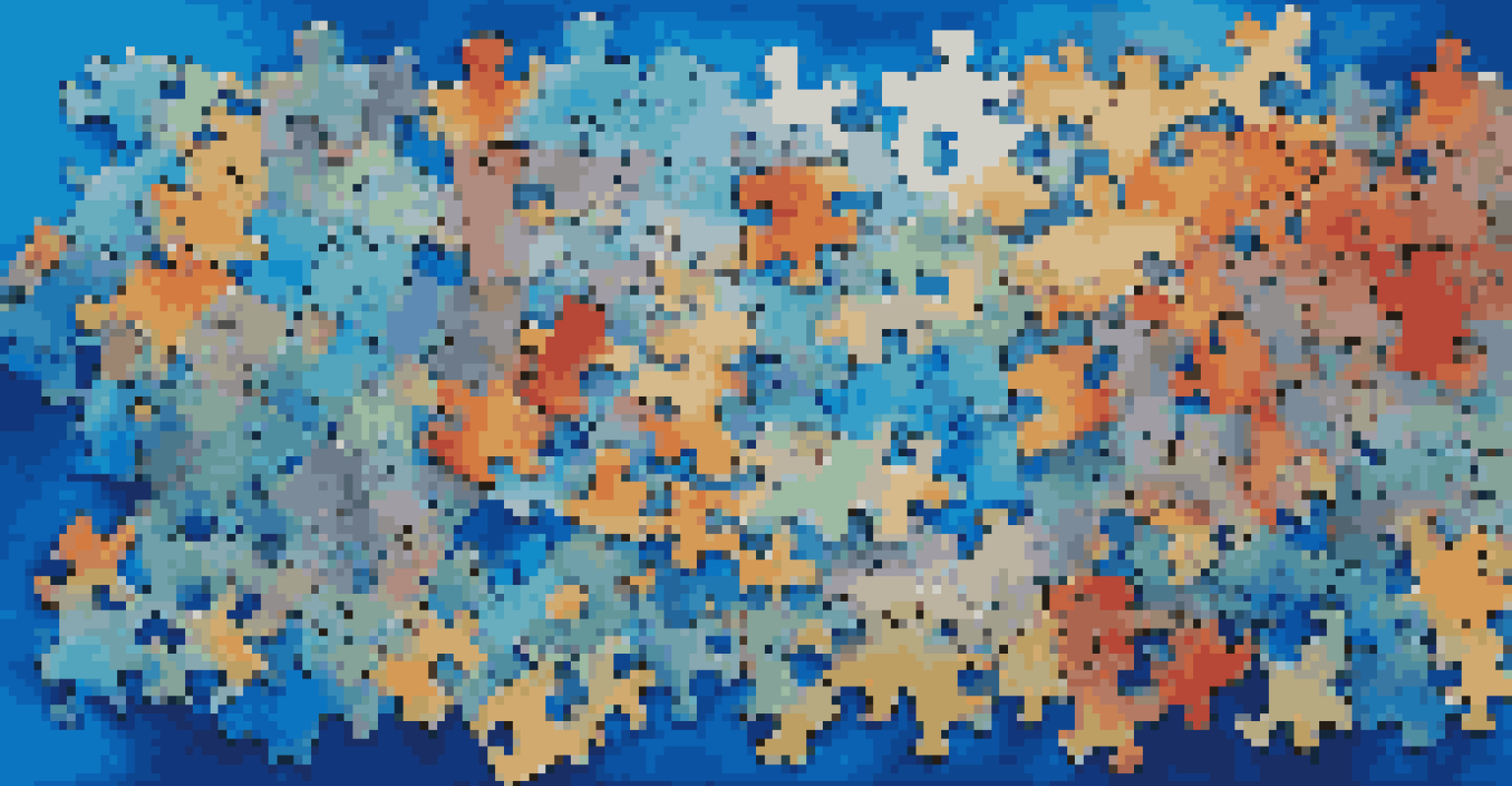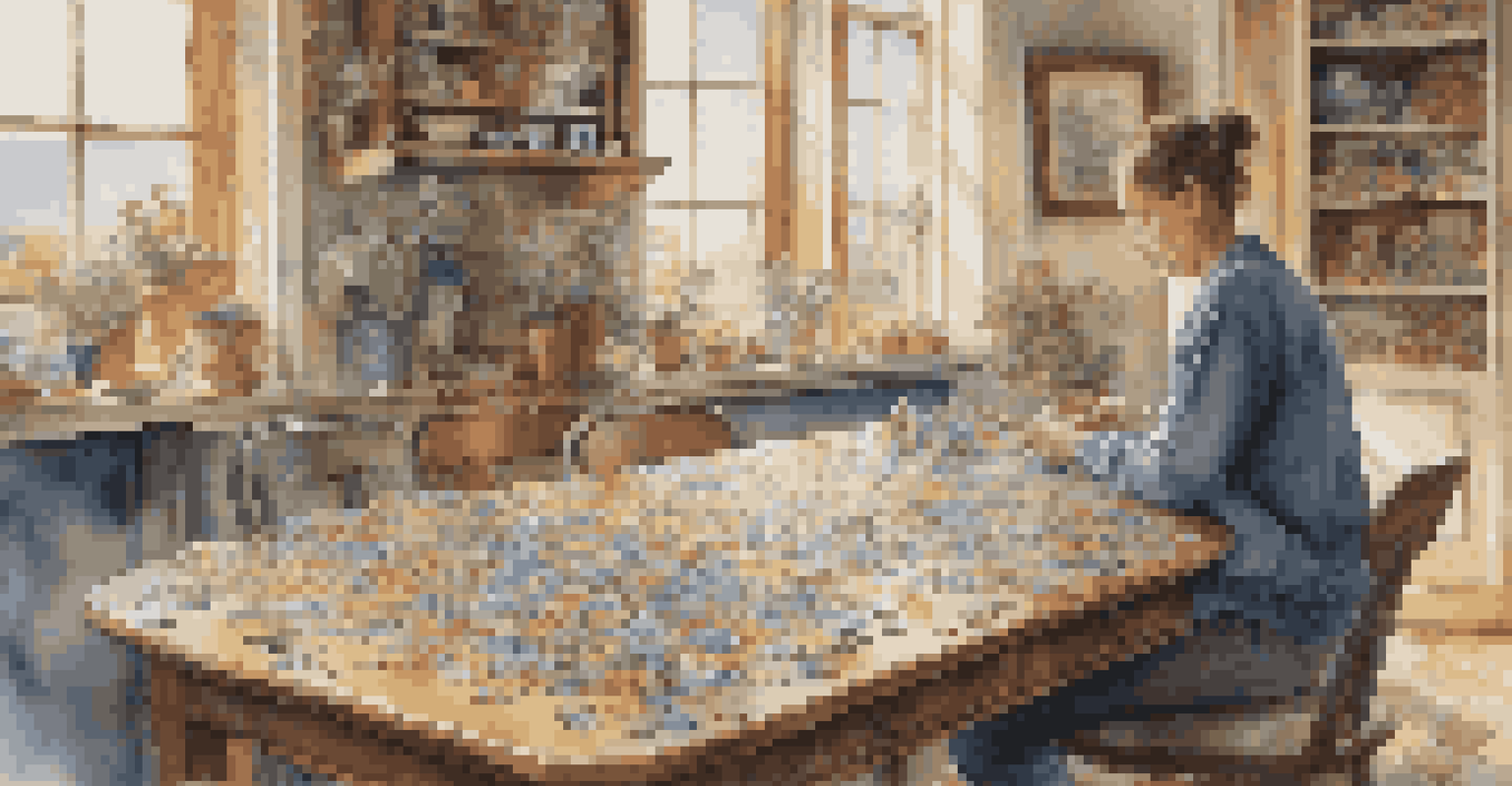Understanding Different Puzzle Piece Shapes and Their Impact

The Basics of Puzzle Piece Shapes Explained
Puzzle pieces come in various shapes, each designed to fit together in unique ways. Understanding these shapes is crucial for both puzzle enthusiasts and designers. For example, traditional interlocking pieces feature knobs and holes, allowing them to connect securely.
Life is a puzzle, and we have to figure out how to fit the pieces together.
However, not all puzzles are created equal; some utilize custom shapes that can make assembly more challenging or interesting. Think of these unique shapes as the 'wild cards' of the puzzle world, adding an element of surprise.
Recognizing these different shapes can significantly enhance your puzzle-solving skills and appreciation for the craft. It allows you to approach puzzles with a strategy, knowing the types of connections each piece can create.
Common Puzzle Piece Shapes: A Closer Look
Among the most common shapes are the classic rectangular and square pieces, which are straightforward and easy to fit together. These shapes are perfect for beginners and provide a solid foundation for understanding how pieces interact.

On the other hand, irregular shapes introduce complexity and can be quite the brain teaser. Picture a puzzle with pieces shaped like animals or objects; they may require more creativity and spatial reasoning to assemble.
Understanding Puzzle Shapes Matters
Recognizing different puzzle piece shapes enhances your solving skills and appreciation for the craft.
Each shape serves a purpose, influencing both the difficulty level and the overall design aesthetic of the puzzle. This variety keeps the puzzle experience fresh and engaging for both novices and veterans alike.
The Role of Edge and Corner Pieces
Edge and corner pieces play a fundamental role in puzzle assembly, acting as anchors for the entire structure. Recognizing these pieces helps you establish the framework, making the process smoother and more efficient.
The beauty of a puzzle is that it can be a reflection of our life — the pieces may not always fit perfectly, but with patience and creativity, we can find a way to make it work.
Corner pieces, with their two flat edges, serve as starting points, while edge pieces, featuring one flat edge, help guide the placement of interior pieces. This structure can be likened to building a house; you need a solid foundation before you can add the walls and roof.
Utilizing edge and corner pieces wisely can save time and reduce frustration, especially in larger puzzles where the chaos can quickly become overwhelming.
How Shape Variation Affects Puzzle Difficulty
The variation in puzzle piece shapes has a direct impact on the difficulty level of a puzzle. Puzzles with standard shapes are often easier to complete because they follow predictable patterns.
Conversely, puzzles with more intricate or asymmetrical shapes can create unexpected challenges, testing your problem-solving skills. It's like trying to solve a riddle with misleading clues; it requires patience and creative thinking.
Edge and Corner Pieces Are Key
Utilizing edge and corner pieces effectively establishes a solid framework for assembling puzzles more efficiently.
This element of surprise makes shape variation a vital aspect of puzzle design, as it keeps puzzlers engaged and motivated to push through challenges.
The Psychology Behind Puzzle Piece Shapes
The shapes of puzzle pieces can also influence how we perceive and approach puzzles psychologically. Research suggests that certain shapes can evoke feelings of satisfaction or frustration depending on how easily they connect.
For instance, a piece that fits snugly into place often causes a sense of accomplishment, while a piece that just won't cooperate can lead to irritation. This dynamic can affect how long someone is willing to stay engaged with a puzzle.
Understanding these psychological effects can enhance the design process, allowing creators to craft puzzles that provide the right balance of challenge and enjoyment.
Creative Uses of Unique Puzzle Piece Shapes
Unique puzzle piece shapes aren't just limited to traditional jigsaw puzzles; they can be found in various creative applications. For example, custom-shaped puzzles are popular as gifts, often reflecting personal interests or milestones.
These creative uses can transform a simple puzzle into a memorable keepsake, allowing individuals to connect with the experience on a deeper level. It's like turning a fun activity into a personal story.
Shape Variation Affects Difficulty
The diversity in puzzle piece shapes directly influences the challenge level, making some puzzles more engaging than others.
Exploring these unique shapes can inspire designers to think outside the box, leading to innovative puzzles that cater to diverse tastes and preferences.
Conclusion: Embracing the Diversity of Puzzle Piece Shapes
In conclusion, understanding the different shapes of puzzle pieces not only enriches the puzzle-solving experience but also showcases the artistry involved in puzzle design. Each shape carries its own significance, contributing to both the challenge and enjoyment of puzzles.
As you navigate through various puzzles, consider how the shapes impact your strategy and engagement. Embracing this diversity can elevate your appreciation for puzzles, whether you're a casual hobbyist or a seasoned expert.

So next time you sit down with a puzzle, take a moment to admire the unique shapes before diving in; you might just find a new layer of enjoyment waiting to be uncovered.